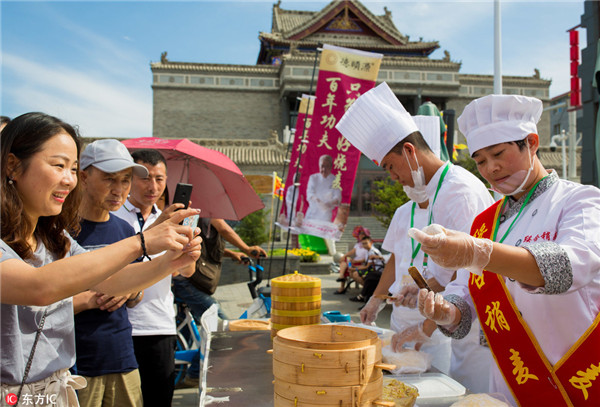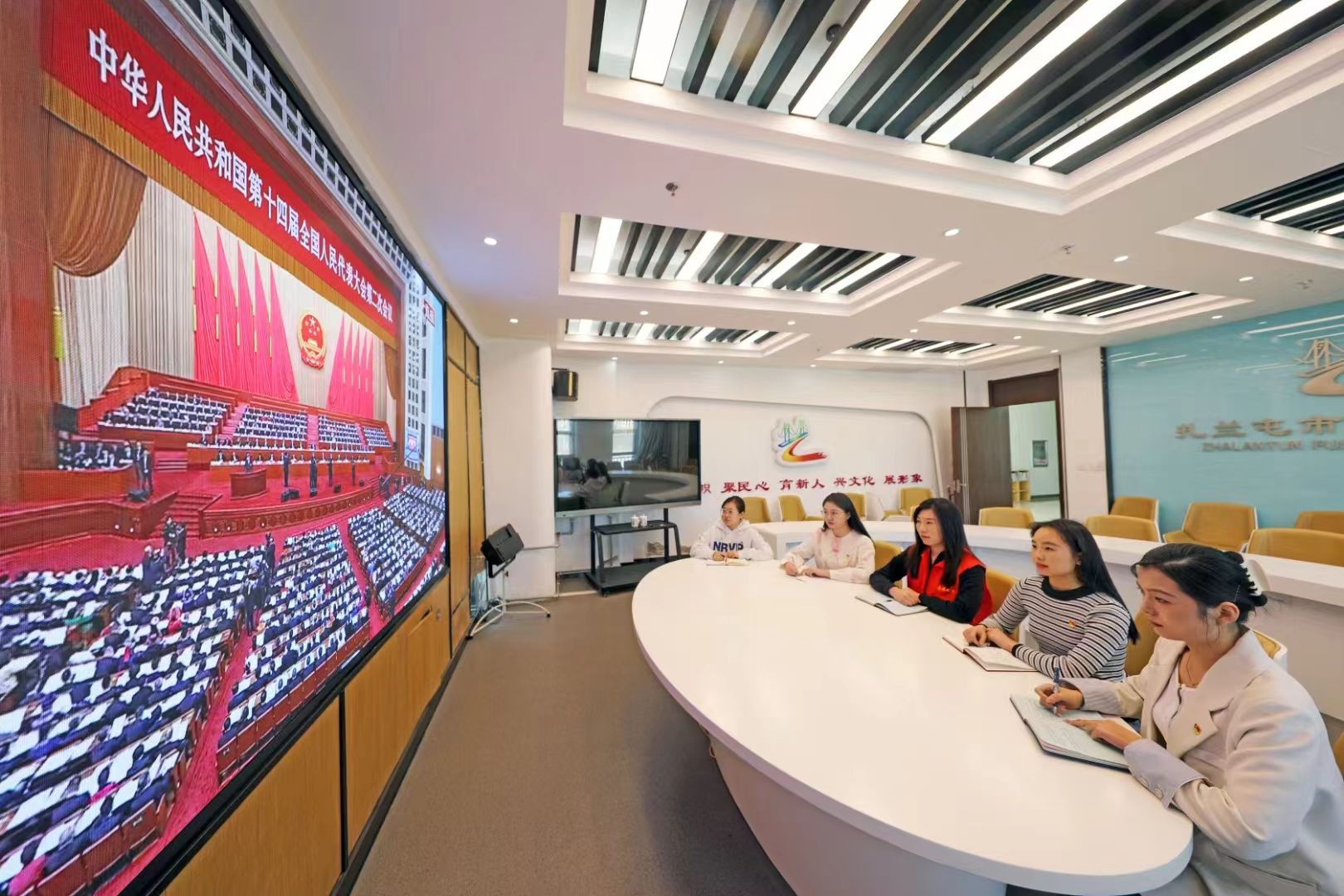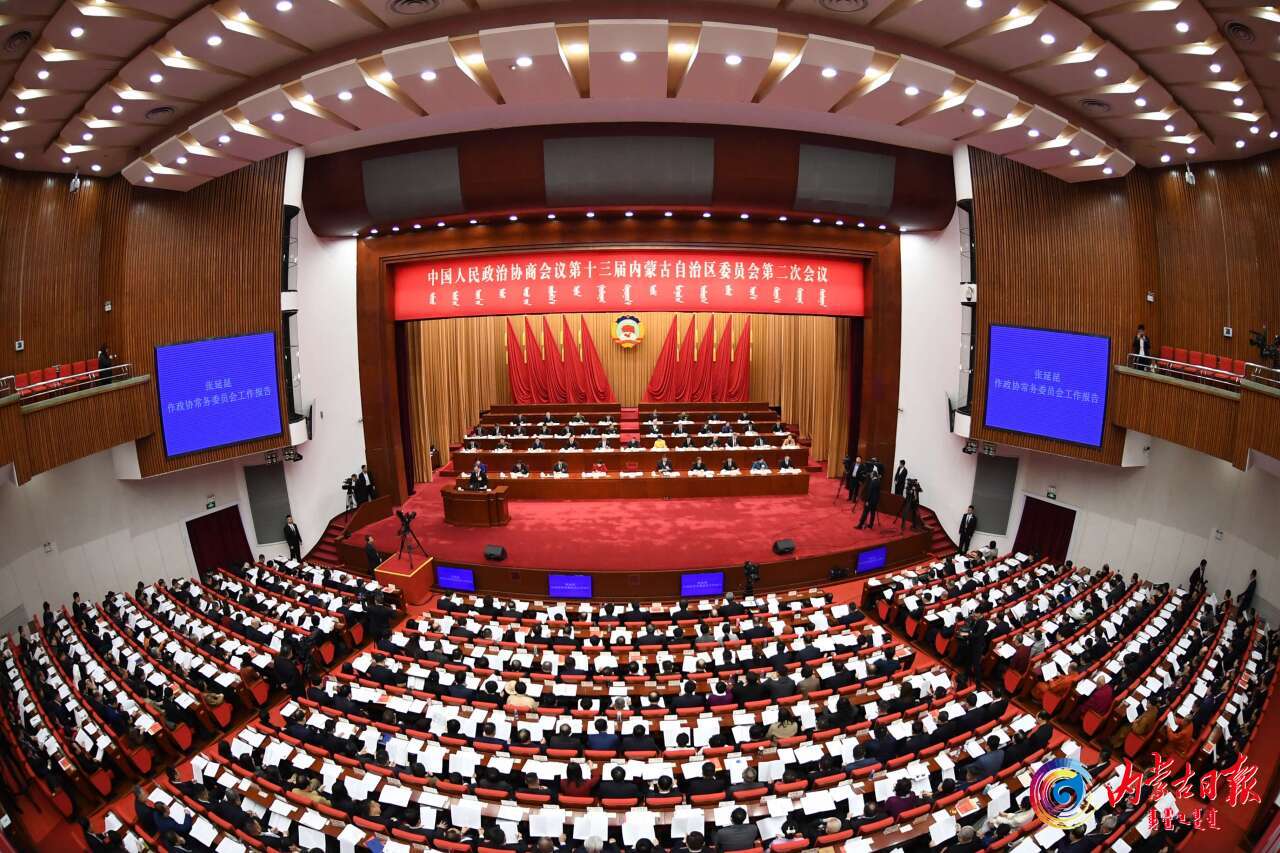Tourism sees new development in Hohhot

Visitors enjoy performances of cooks at a shaomai skill competition held at Xincheng district in Hohhot, Inner Mongolia autonomous region, Aug 12. [Photo/IC]
After years of seeking a unique way to develop tourism, Hohhot, capital of North China's Inner Mongolia autonomous region, has seen remarkable accomplishments in the tourism sector.
Building tourism brand
Rich in natural resources, Hohhot has been encouraging its counties to build demonstration scenic areas and strive for honors of national-level tourist scenic spots. One 4A-level scenic spot and two 3A-level scenic spots were added to the city's tourist attraction list in 2017. Two other tourist areas are currently applying for national 5A-level designation. In addition, Yili industrial tourism park was officially listed among the first industrial tourism demonstration zones by the Ministry of Culture and Tourism. Chilechuan scenic spot was rated as one of the first tourism demonstration bases for wetlands.
Improving infrastructure and service
The government has improved local infrastructure and facilities as well as tourism services. A number of key tourism projects have been developed, including a spa, an amusement park, self-driving camps, and hotels featuring hot springs. In addition, 10 4A-level scenic spots are being surveilled by national, regional and municipal tourism management platforms. Online platforms providing tourism information and services have been launched, such as a tourism marketing information center and an e-commerce platform.
Promoting integrated tourism
Hohhot pursued a new development mode through integrating tourism with culture, sports, transportation, agriculture and animal husbandry, and recuperation. It has organized an array of cultural events, including the Naadam fair, a mass traditional Mongolian festival, to attract visitors. It has also filed applications for demonstration bases for traditional Chinese medicine, sports and leisure agriculture and animal husbandry.
In 2017, the city handled an influx of about 39.08 million tourists, contributing 75.91 billion yuan ($11.10 billion) to its comprehensive tourism revenue, a year-on-year increase of 13 percent and 23 percent. The number of people working in the tourism industry was 108,000, or 9.4 percent of employees in all industries in the city.
The tourism industry has been a major engine powering Hohhot's economic growth.
In 2018, the government will forge ahead to further promote tourism in a quest to earn tourism revenue of 95 billion yuan.



 Print
Print Mail
Mail





